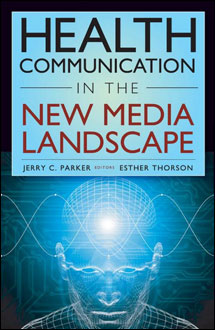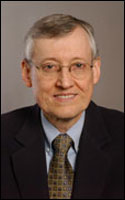MU Researchers Offer Insights for Advancing Health Communication through Digital Media

By Emily Smith
MU News Bureau
Columbia, Mo. (May 27, 2009) — Digital media are changing the environment for communicating health information. In a new book, Health Communication in the New Media Landscape, University of Missouri researchers examine how the digital media revolution is affecting health and health care in the United States. Effective health communication can significantly enhance health care and public health as well as reduce inequities in people’s access to health information and services, according to the authors.
“Communication is at the heart of health care and health promotion,” said Esther Thorson, associate dean for the Missouri School of Journalism. “Advances in communication technology offer new and exciting opportunities to empower individuals and groups in relation to their health.”
Digital media, including electronic health information, social networks and telehealth, have the potential to provide more effective health care and information to citizens throughout the world, Thorson said. The goal of the book is to help practitioners, administrators, policy makers and the public better understand the promise of these tools and services for improving health.


Health Communication in the New Media Landscape is a collaborative effort between Thorson and Jerry C. Parker, associate dean for research and clinical professor of physical medicine and rehabilitation in the MU School of Medicine. Parker and Thorson, along with renowned authorities in health care and communication, compiled examples of how advances in technology can strengthen people’s confidence in their interactions with the health care system and enable health care professionals to better tailor their work and time for the benefit of patients and clients.
The book addresses several unique topics, including:
- the role technology can and will play in health communication;
- how new media can be used to improve health literacy;
- how patients can learn about health-related issues and health care;
- demographic changes – growing ethnic communities and the aging U.S. population; and
- the impact of the new media landscape on health care providers, insurance companies and health care policies.
“There is limited information for health care professionals who want and need new ways to communicate health information with each other, their patients and the general public,” Thorson said. “The authors of the book address this need by providing examples of innovative, media-based methods of health communication.”
The book includes contributions by 13 authors from the University of Missouri and 17 authors from other prominent universities and health organizations, including the National Cancer Institute, the World Health Organization, Boston University, Columbia University Mailman School of Public Health, and the Mount Sinai School of Medicine.
The Missouri School of Journalism is home to several health communication research initiatives, including the Association of Health Care Journalists, an independent membership organization dedicated to advancing public understanding of health care issues. Its mission is to improve the quality, accuracy and visibility of health care reporting, writing and editing. The Health Communication Research Center is a grant-funded center based in the journalism school. Its primary mission is to foster interdisciplinary research to improve communication between the health care community and the public.
Updated: May 4, 2020